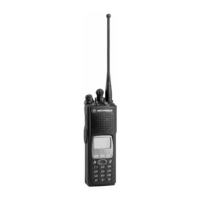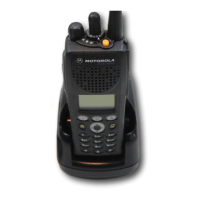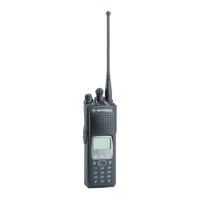Chapter 3 Basic Theory of Operation
This chapter discusses the basic operational theory of the ASTRO XTS 5000 radio, which is a
wideband, synthesized radio available in the VHF (136–174 MHz), UHF Range 1 (380–470 MHz),
UHF Range 2 (450-520 MHz), and 764 to 870 MHz frequency bands. All ASTRO XTS 5000 radios
are capable of both analog operation (12.5 kHz or 25 kHz bandwidths) and ASTRO mode (digital)
operation (12.5 kHz only).
3.1 Major Assemblies
The ASTRO XTS 5000 radio includes the following major assemblies (See Figure 3-1):
• VOCON Board — contains a dual-core processor which includes both the microcontroller unit
(MCU) and a digital signal processor (DSP) core, the processor’s memory devices, an audio
and power supply support integrated circuit (IC), a digital support IC, and the audio power
amplifier.
• Transceiver (XCVR) Board — contains all transmit, receive, and frequency generation
circuitry, including the digital receiver back-end IC and the reference oscillator.
• Controls/Universal Flex — contains volume/on/off switch, frequency selector switch, push-to-
talk (PTT) switch, monitor button, several function-selectable switches, universal connector,
speaker, and microphone.
• Display (Models II and III Only) — 96 pixels x 64 pixels bit-mapped, liquid-crystal display
(LCD).
• Keypad (Models II and III Only) — Model II - a 3 x 2 Menu keypad with 4-way navigation
button; Model III - a 3 x 2 Menu keypad with 4-way navigation button, and a 3 x 4 alphanumeric
keypad.
Figure 3-1. XTS 5000 Overall Block Diagram
Universal
Flex
External
ccessory
onnector
(Side Connector,
Controls, LEDs,
Speaker,
Microphone)
ote:
ndicates 26
ires
VOCON
Board
Transceiver
Board
Encryption
Module
(Optional)
7.5V
Battery
Keypad
Antenna
Display
3
26
40
22
26
22
40
13
J301
J107
J701
J101
P1
J1 P101
P201 J2
J3

